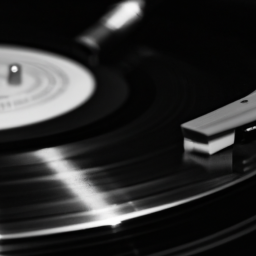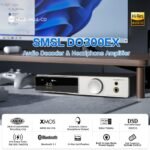Picture this: You find yourself in a dimly lit room, surrounded by shelves of vinyl records. As you carefully select one to play on your turntable, your mind drifts to the intricate art of cartridge selection. The choice of cartridge – the delicate needle that glides across the vinyl grooves – is crucial for any vinyl enthusiast. In this article, we will explore the nuances and considerations that come into play when selecting the perfect cartridge for an unmatched listening experience. Get ready to elevate your vinyl journey to a whole new level.
Understanding Phonograph Cartridges
Basics of phonograph cartridges
Phonograph cartridges are crucial components in the playback of vinyl records. They are small devices that contain a stylus (also known as a needle) which tracks the grooves on the record, converting the mechanical movement of the stylus into an electrical signal that can be amplified and played through speakers. Understanding the basics of phonograph cartridges is essential for vinyl enthusiasts who want to optimize their listening experience.
Role of cartridges in vinyl record playback
The role of cartridges in vinyl record playback is significant. Cartridges are responsible for accurately tracking the complex grooves of the record and converting the minute movements into the electrical signals that produce sound. The quality of the cartridge greatly impacts the sound quality, dynamics, and overall performance of the vinyl playback. Different cartridge types and features can significantly alter the listening experience.
Common cartridge types
There are various types of cartridges available on the market, each with its unique characteristics. Moving Magnet (MM) and Moving Coil (MC) cartridges are the most common types. Moving Magnet cartridges have a magnet attached to the cantilever, while Moving Coil cartridges have a coil. MM cartridges are generally more affordable and have a higher output level, making them compatible with a wide range of amplifiers. MC cartridges, on the other hand, are known for their superior sound quality but require a specialized MC phono stage or step-up transformer for amplification. Other less common types include Moving Iron (MI) and Strain Gauge cartridges, which offer their own advantages and characteristics.
Dynamic Parameters of Cartridges
Stylus profile and its importance
The stylus profile plays a crucial role in the reproduction of the record’s groove. There are two main types of stylus profiles: elliptical and spherical. Elliptical stylus profiles are more common and offer better tracking ability, improved frequency response, and reduced record wear compared to spherical profiles. The choice of stylus profile should be based on personal preference and the condition of the records being played.
Tracking force and cartridge compliance
Tracking force refers to the downward pressure exerted by the cartridge’s stylus onto the record surface. It is essential to set the tracking force correctly to ensure optimum playback performance and prevent excessive wear of the stylus and records. Cartridge compliance is a measurement of how well the cartridge responds to changes in tracking force. Matching the compliance of the cartridge to the tonearm’s effective mass is crucial for maintaining proper tracking and minimizing distortion.
Vertical and lateral tracking angles
The vertical and lateral tracking angles refer to the angle at which the stylus tracks the record grooves. The ideal tracking angles vary depending on the cartridge design and the record being played. Incorrect tracking angles can result in distortion, mistracking, and increased record wear. Proper setup and adjustment of the cartridge’s tracking angles are necessary to achieve optimal sound quality and prolong the lifespan of both the cartridge and the records.
Understanding Cartridge Output Levels
Moving Magnet (MM) and Moving Coil (MC) cartridges
Moving Magnet (MM) and Moving Coil (MC) cartridges are the two primary types of cartridges based on their output design. MM cartridges have a higher output voltage, making them compatible with most standard phono inputs on amplifiers. MC cartridges, on the other hand, have a lower output voltage but offer superior sound quality and more precise tracking. They require a specialized MC phono stage or step-up transformer for proper amplification.
High-output and low-output cartridges
Apart from the MM and MC types, cartridges can also be classified as high-output or low-output based on their output level. High-output cartridges have a higher voltage output, allowing them to be used with a wider range of phono preamps and amplifiers without needing additional amplification devices. Low-output cartridges produce a lower voltage signal and require a dedicated step-up transformer or a phono preamp with a high-gain setting.
Cartridge-output level and preamp compatibility
When selecting a cartridge, it is essential to consider its output level and compatibility with the phono preamp or amplifier. Choosing a cartridge with a compatible output level ensures optimal performance and avoids the need for additional amplification devices. It is crucial to check the manufacturer’s specifications and recommendations to ensure proper compatibility between the cartridge and the rest of the audio system.
Cartridge Materials and Construction
Common cartridge materials
The materials used in the construction of cartridges greatly influence their overall performance and sound quality. The cantilever, typically made of aluminum or boron, holds the stylus and transfers its movement to the coil or magnet. The stylus itself is commonly made of diamond or other hard materials known for their durability and ability to accurately track the grooves. The body of the cartridge is usually made of plastic, aluminum, or even wood, with each material offering its unique sonic characteristics.
Importance of construction quality
The quality of construction plays a vital role in the overall performance of the cartridge. Precision engineering, tight tolerances, and attention to detail are essential to ensure proper alignment, reduce resonance, and minimize unwanted vibrations. Cartridges with high-quality construction tend to offer better sound reproduction, improved tracking ability, and extended durability.
Impact of materials and construction on sound quality
The choice of cartridge materials and construction directly affects the sound quality and sonic characteristics of the playback. Different materials can result in variations in tonal balance, imaging, transient response, and overall clarity. It is important to consider personal preferences and the sonic characteristics desired when selecting a cartridge based on its materials and construction.
Cartridge installation and Set-Up
Cartridge mounting and alignment
Proper cartridge mounting and alignment are vital for achieving optimal sound reproduction and preventing unnecessary wear on the stylus and records. Mounting the cartridge securely and aligning it correctly ensures accurate tracking while minimizing distortion and maximizing channel separation. The use of alignment tools, such as protractors or alignment gauges specific to the turntable and tonearm setup, is recommended to achieve precise cartridge positioning.
Setting tracking force and anti-skate
Setting the tracking force is crucial for proper stylus tracking while avoiding excessive wear on the stylus and records. The proper tracking force will vary depending on the cartridge’s specifications, the tonearm’s effective mass, and personal preference. Anti-skate adjustment, which counteracts the forces pulling the stylus towards the center of the record, is also important for achieving balanced tracking and minimizing distortion.
Cartridge break-in period
Like many audio components, cartridges may require a break-in period before achieving their optimal sound quality. During this break-in period, the cartridge’s components, particularly the suspension and stylus, settle into their operating conditions. It is recommended to follow the manufacturer’s guidelines and play a selection of records to allow the cartridge to reach its full potential before critically assessing its performance.
Assessing Cartridge Performance
Listening for soundstage, dynamics, and resolution
When assessing cartridge performance, listening for several key elements is essential. The soundstage refers to the three-dimensional space in which the music is projected, with a wide and well-defined soundstage being desirable. Dynamics refer to the contrast between the softest and loudest passages, with good cartridge performance delivering excellent dynamic range. Resolution refers to the ability to reproduce fine details and textures within the music, allowing for a more engaging and immersive listening experience.
Importance of frequency response
The frequency response of a cartridge refers to its ability to reproduce the entire range of audible frequencies accurately. A flat frequency response, within reasonable tolerances, ensures a faithful reproduction of the recorded music. Variations in frequency response can result in tonal imbalances, such as boosted bass or exaggerated treble, which may not accurately represent the original recording. Understanding the frequency response characteristics of a cartridge can help in selecting one that suits personal preferences and complements the audio system.
Impact of cartridge on vinyl wear
Cartridge performance also has an impact on the wear and lifespan of vinyl records. A well-aligned cartridge with proper tracking force and stylus profile can help minimize wear on the record grooves. On the other hand, a poorly aligned or improperly set-up cartridge can cause excessive wear, groove damage, and accelerated degradation of the vinyl. Regular checking and maintenance of the cartridge can help ensure proper performance while preserving the integrity of the records over time.
Maintaining your Cartridge
Proper cleaning of cartridges
Regular cleaning of cartridges is essential for maintaining their performance and prolonging their lifespan. Dust, debris, and residue can accumulate on the stylus, affecting its tracking ability and sound quality. Specialized stylus cleaning brushes or cleaning solutions designed for cartridges can be used to gently remove any build-up without damaging the delicate stylus. Cleaning should be performed carefully, following the manufacturer’s guidelines, to avoid any mishaps that could cause damage to the stylus or suspension.
When to replace the stylus
The stylus is a wear item and will require replacement over time. Worn-out or damaged styli can result in poor playback quality, increased distortion, and excessive wear on vinyl records. The lifespan of a stylus will depend on factors such as the frequency of use, the condition of the records being played, and the quality of the stylus itself. Regular inspection and monitoring of the stylus condition are recommended, and stylus replacement should be carried out when signs of wear or deteriorating performance become apparent.
Addressing common cartridge issues
Cartridges can occasionally experience issues, such as channel imbalance, tracking problems, or loss of sound quality. Some common troubleshooting steps can help address these issues. Checking the cartridge alignment and tracking force, cleaning the stylus and contacts, and ensuring proper connections can often resolve minor issues. If problems persist, consulting the manufacturer’s troubleshooting guide or seeking professional assistance may be necessary to diagnose and rectify more complex cartridge-related issues.
The Price Point and Value Proposition
Budget cartridges versus high-end models
Cartridges are available at various price points, ranging from budget-friendly options to high-end models. Budget cartridges offer an affordable entry point for vinyl enthusiasts, providing decent sound quality and performance. High-end cartridges, on the other hand, offer exceptional sound reproduction and advanced features at a higher price. The decision between budget and high-end cartridges ultimately depends on personal preferences, the desired level of performance, and the available budget.
Balancing price and performance
Choosing the right cartridge involves finding the right balance between price and performance. While high-end cartridges may offer outstanding sound quality, they may not always be necessary or practical for every listener. Budget and mid-range cartridges can often provide a satisfactory listening experience at a more affordable price point. It is important to consider personal preferences, the quality of the rest of the audio setup, and the available budget when selecting a cartridge.
The cost-performance ratio in cartridge selection
The cost-performance ratio is an important factor to consider when selecting a cartridge. It refers to the overall value and performance that a cartridge offers relative to its price. A higher cost-performance ratio indicates a better balance between price and performance, offering enhanced sound quality and features without significantly increasing the price. Evaluating the cost-performance ratio can help ensure the selection of a cartridge that provides excellent value for the investment.
Popular Cartridge Brands and Models
Overview of popular cartridge manufacturers
There are numerous reputable cartridge manufacturers known for producing high-quality products. Some popular cartridge manufacturers include Audio-Technica, Ortofon, Grado, Denon, and Shure, among others. Each manufacturer offers a range of models with different characteristics and performance levels to cater to various listener preferences and budgets.
Top-rated cartridge models for various budgets
Several cartridge models have received high praise and critical acclaim, offering exceptional performance within different budget ranges. For budget-conscious vinyl enthusiasts, options like the Audio-Technica AT95E or Ortofon 2M Red provide excellent sound quality and value. In the mid-range, cartridges such as the Grado Prestige Gold or the Ortofon 2M Blue offer enhanced performance and precision. High-end options like the Ortofon Cadenza Black or the Audio-Technica ART9 cater to audiophiles seeking the utmost in sonic accuracy and musicality.
Understanding manufacturer specifications
Manufacturer specifications provide important information about a cartridge’s technical characteristics and performance capabilities. These specifications often include details about frequency response, channel separation, output level, tracking force range, compliance, and stylus profile. Understanding these specifications can help in comparing different cartridge models and selecting one that aligns with personal listening preferences and system requirements.
Final Considerations in Cartridge Selection
Matching cartridge to turntable and tonearm
When selecting a cartridge, it is crucial to consider its compatibility with the turntable and tonearm. The cartridge and tonearm must have a compatible mounting system and ensure proper alignment for optimal performance. Additionally, the effective mass of the tonearm should match the compliance of the cartridge to prevent tracking issues and minimize distortion. Consulting the turntable and tonearm manufacturers’ guidelines can ensure a suitable match and optimal performance.
Considerations for different music genres
Different music genres may benefit from specific cartridge characteristics. For example, cartridges with excellent tracking ability and dynamic range may be preferred for highly dynamic genres such as classical or jazz. Cartridges with a warmer or more rounded sound may be favored for genres like rock or pop. Personal preferences, the desired sound signature, and the genres of music primarily listened to should be taken into account when selecting a cartridge to tailor the listening experience accordingly.
Keeping the rest of your system in mind
When selecting a cartridge, it is important to consider the overall audio system. The quality of the turntable, tonearm, phono preamp, amplifier, and speakers all contribute to the final sound quality. It is essential to ensure that the cartridge chosen complements the rest of the system and is not hindered by any weak links. Achieving synergy and balance between the cartridge and the entire setup is crucial for maximizing the musical enjoyment and getting the best possible sound quality.
In conclusion, understanding the intricacies of cartridge selection is essential for vinyl enthusiasts seeking to optimize their listening experience. Considering factors such as stylus profile, tracking force, cartridge output level, materials and construction, installation and set-up, performance assessment, maintenance, price point and value, popular brands and models, and other final considerations can help in selecting a cartridge that suits personal preferences, complements the audio system, and provides a satisfying and engaging vinyl playback experience.










